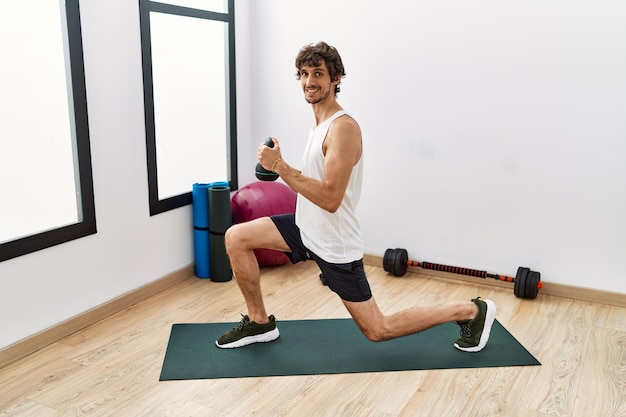As I embarked on my fitness journey, one truth became strikingly clear: cardio exercises are a cornerstone for men’s health and vitality. In an age where quick fixes and fad diets dominate, embracing regular cardio isn’t just a choice; it’s a commitment to a healthier lifestyle. These exercises not only play a pivotal role in weight management but also sculpt the foundation for enhanced physical performance.
By integrating cardio into our routines, we unlock a multitude of benefits—from boosted stamina and heart health to improved mental clarity. It’s fascinating to discover how something as simple as a brisk walk or an intense cycling session can transform our overall well-being. Understanding the science behind cardio exercises for men empowers us to make informed decisions that foster longevity and strength.
Understanding Cardio Exercises
Understanding Cardio Exercises
Cardio exercises, often referred to as aerobic exercises, are physical activities that elevate your heart rate and promote increased cardiovascular efficiency. For men’s health, these exercises are crucial, as they not only enhance endurance but also reduce the risk of heart disease, manage weight, and improve mood through the release of endorphins. Integrating cardio into a fitness routine can significantly contribute to overall well-being.
There are various types of cardio exercises, each offering unique benefits. Running and cycling are popular for their effectiveness in burning calories and improving stamina. Swimming is a low-impact option that promotes muscle strength and flexibility. Additionally, high-intensity interval training (HIIT) combines short bursts of intense activity with rest periods, maximizing fat loss in minimal time.
Other forms of cardio, such as brisk walking, jump rope, or participating in dance classes, cater to different fitness levels and preferences. Each type not only boosts cardiovascular health but also fosters mental clarity and emotional resilience. Understanding the variety of cardio exercises available empowers men to tailor their workouts according to personal goals and abilities, enhancing the transformative journey toward better health.
Top Cardio Exercises for Men
Top Cardio Exercises for Men
Cardio exercises are vital for improving heart health, boosting endurance, and burning calories effectively. Here are some of the most effective cardio exercises for men, complete with step-by-step instructions and the equipment needed.
1. Jump Rope
Equipment: Jump rope.
Instructions: Begin with your feet shoulder-width apart. Hold the handles of the rope with both hands. Rotate the wrists to swing the rope over your head and jump when it reaches your feet. Aim for 15-20 minutes, increasing speed as you progress.
2. High-Intensity Interval Training (HIIT)
Equipment: None required; can include weights.
Instructions: Choose 4-5 exercises such as burpees, squats, or mountain climbers. Perform each for 30 seconds at maximum effort, followed by 30 seconds of rest. Repeat the circuit 4-5 times for a full workout.
3. Running
Equipment: Running shoes.
Instructions: Start with a warm-up walk for 5 minutes. Gradually increase to a pace that maintains your heart rate in the target zone. Aim for 30 minutes, alternating between jogging and sprinting.
4. Cycling
Equipment: Stationary bike or road bike.
Instructions: Adjust the seat height for comfort. Start with a warm-up at a low intensity for 5 minutes. Increase intensity for 20-30 minutes, including intervals of standing up and pedaling harder.
5. Rowing
Equipment: Rowing machine.
Instructions: Sit on the rowing machine with feet secured. Push off with your legs, then lean back slightly and pull the handle towards your chest. Aim for a steady rhythm for 20-30 minutes, focusing on smooth strokes.
Nutrition Tips for Men Focusing on Cardio

Nutrition plays a pivotal role in maximizing the benefits of cardio exercises for men. It’s not just about the workouts; what you fuel your body with can significantly enhance performance, endurance, and recovery. To truly transform your health through cardio, focus on integrating nutrient-dense foods into your daily diet.
Prioritize complex carbohydrates like whole grains, which provide a steady source of energy during lengthy cardio sessions. Pair these with lean proteins, such as chicken or fish, to aid muscle recovery. Incorporating healthy fats from avocados and nuts can further enhance energy levels, ensuring you’re ready to tackle each workout.
Hydration should also not be overlooked. Adequate water intake is essential to keep your body functioning optimally, especially during intense cardio training. Consider sports drinks with electrolytes for prolonged sessions to replace lost minerals.
Additionally, don’t underestimate the power of antioxidants found in fruits and vegetables. Foods like berries and spinach can reduce exercise-induced oxidative stress, allowing for quicker recovery times and improved performance in your next workout. A balanced diet, coupled with a structured cardio routine, sets the stage for achieving your fitness goals.
Creating a Balanced Cardio Routine
Incorporating a variety of cardio exercises into your weekly workout plan can supercharge your fitness journey. Start by assessing your current fitness level and preferences; this ensures that your routine remains enjoyable. Aim for at least 150 minutes of moderate-intensity cardio each week, tailoring this duration to fit your lifestyle.
Consider alternating between different forms of cardio, such as running, cycling, swimming, and high-intensity interval training (HIIT). This not only keeps workouts fresh but also challenges various muscle groups, preventing plateauing. Schedule these sessions strategically: perhaps a long run on weekends, HIIT midweek, and lighter activities like brisk walking or cycling on off days.
To maximize efficiency, pair cardio workouts with strength training. For example, perform a strength session followed by 20-30 minutes of cardio to increase calorie burn. Remember to include rest days to allow your body to recover and adapt, promoting long-term adherence to your fitness goals.
Measuring Your Cardio Progress
Measuring your cardio progress is essential for achieving fitness goals, as it allows you to assess improvements in your heart health and stamina over time. One effective method to track your progress is by monitoring your heart rate during exercises. Establishing target heart rate zones can help you train within optimal intensity levels, which may vary based on your age and fitness level. Most fitness trackers and smartwatches provide real-time heart rate data, allowing you to adjust your workout as needed.
Additionally, keeping a workout journal can be beneficial. Document the duration, intensity, and frequency of your cardio sessions. Over weeks or months, you can compare this data to gauge improvements in stamina—note how much longer you can sustain your pace or how quickly your heart rate recovers after exercise.
Another valuable approach is to perform periodic fitness tests, such as timed runs or distance challenges. These benchmarks provide clear indicators of progress, highlighting enhancements in your cardiovascular endurance. Regular assessments can motivate you and reinforce the effectiveness of your cardio exercises for men.
Inspirational Quote
“The difference between a successful person and others is not a lack of strength, not a lack of knowledge, but rather a lack in will.” – Vince Lombardi
This powerful quote resonates deeply with anyone on a fitness journey. It reminds us that the heart and mind must align in pursuit of our goals. Tracking your cardio progress isn’t just about numbers; it’s an act of will. Each entry in your workout journal and every heart rate session symbolizes your dedication. Embrace the process, and let your willpower pave the way for your triumphs in health and fitness.





